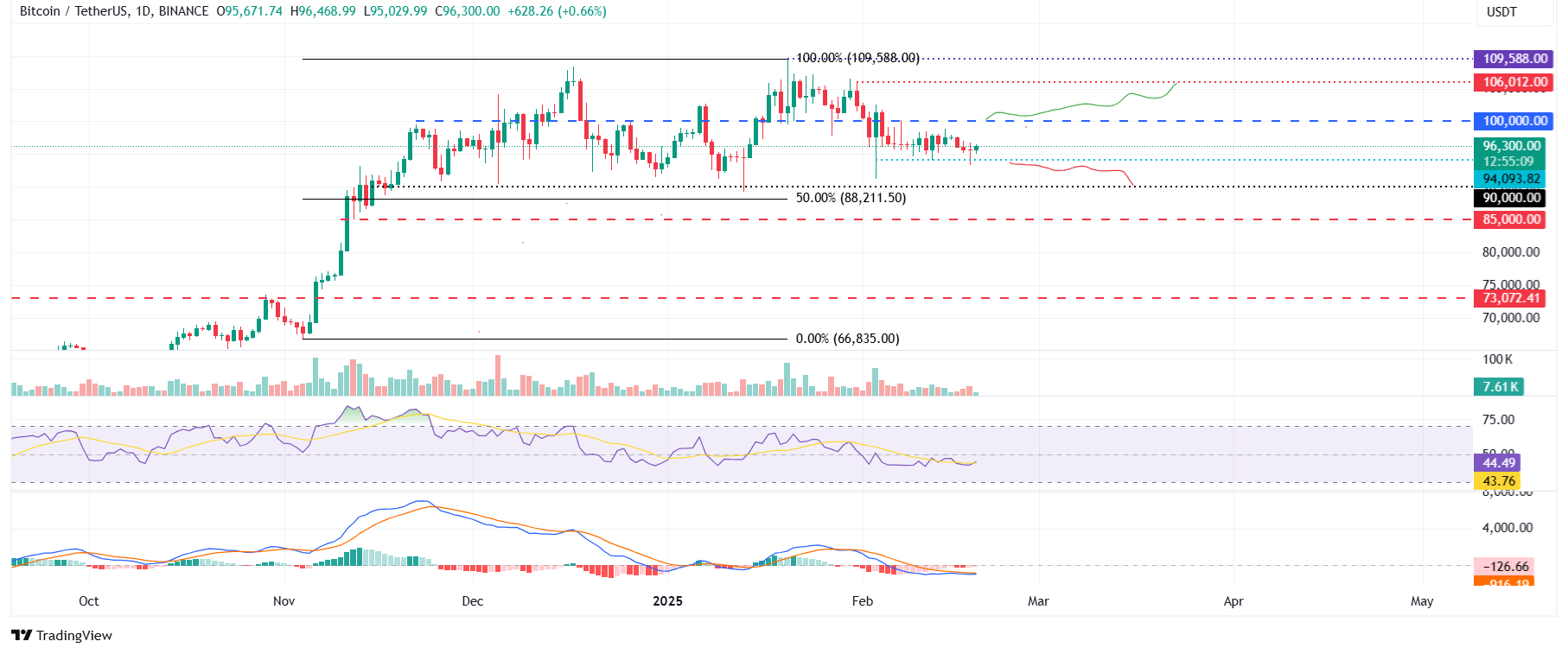Bitcoin held steady on Thursday as volatility dropped to multi-month lows, raising concerns among traders that a sudden price swing could trigger liquidation cascades. With BTC struggling to gain momentum, the lack of significant price movement has heightened speculation about the next major shift in the market.
Historically, periods of low volatility in Bitcoin have often preceded sharp breakouts, as reduced price swings tend to lull traders into a false sense of stability before a decisive move. With leverage still prevalent in crypto markets, any unexpected price spike—up or down—could force liquidations of overleveraged positions, potentially fueling a chain reaction of selling or buying.

Bitcoin/TetherUS 1-D Chart as of February 20th, 2025 (Source: TradingView)
Despite Bitcoin’s recent stability, market sentiment remains mixed. On the one hand, institutional interest in spot Bitcoin ETFs has provided long-term support, with inflows signaling growing mainstream adoption. On the other, concerns about regulatory uncertainty and macroeconomic conditions, including the Federal Reserve’s policy stance, have kept many investors cautious.
The broader crypto market has mirrored Bitcoin’s lackluster movement, with altcoins also seeing reduced volatility. This stagnation reflects a wait-and-see approach from traders, as they assess whether Bitcoin’s next move will be fueled by macroeconomic shifts or internal market dynamics.
Technical analysts are closely watching key support and resistance levels, with $40,000 acting as a major psychological floor and $45,000 as an upside barrier. A break beyond either level could signal Bitcoin’s next major trend, but for now, traders remain in cautious consolidation mode.
Looking ahead, investors will focus on U.S. economic data, interest rate expectations, and institutional flows, all of which could influence Bitcoin’s next big move. Until then, the crypto market remains vulnerable to sudden volatility spikes, keeping traders on edge as they anticipate Bitcoin’s next breakout.
















